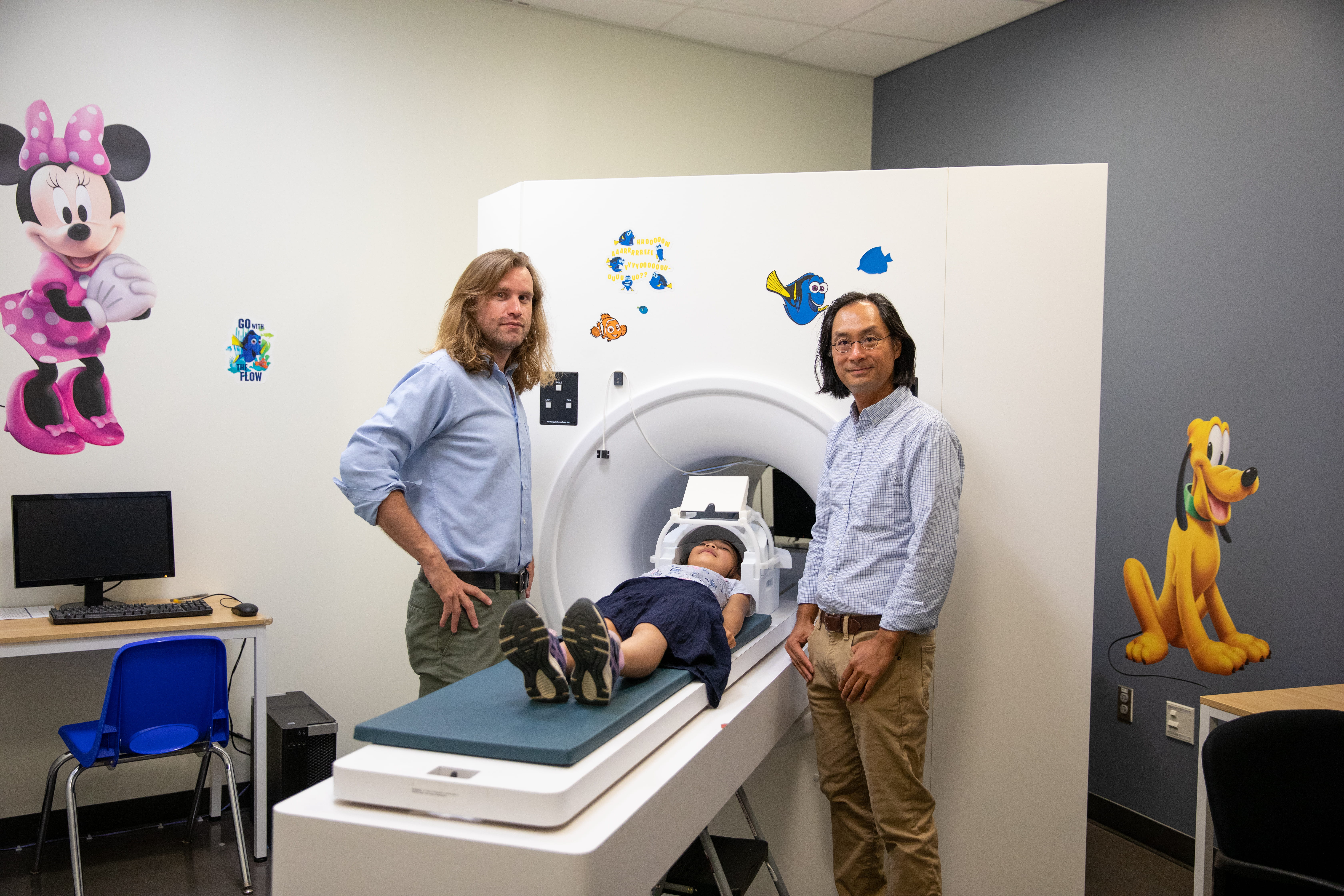LABS & RESEARCH
Neurobiology of Speech and Language Lab

Related Projects:
Neural Subtypes of Developmental Stuttering
Brain Activity During Continuous Speech Production
Moments of stuttering typically occur during the production of continuous speech. However, studying brain activity during continuous speech production is challenging because speech-related head movements may adversely affect the data quality of many neuroimaging techniques. To overcome this challenge, we separate noise and signals associated with neuronal activity in fMRI based on their distinct spatial patterns in the brain. Using this fMRI de-noising technique, we are able to study cortical and subcortical activity in children and adults who stutter and fluent speakers during continuous speech production.
Effects of Stuttering Mutations
Developmental stuttering has a strong genetic underpinning. Researchers have begun to identify mutations associated with stuttering and engineered knock-in mice with those mutations. In this project, we study the effects of gnptab mutations on mouse vocalization behaviors and brain development in different stages of life.
Origins of EEG Signatures Associated with Disfluent Speech
Interpersonal Neurophysiology Lab

Related Projects:
Remote Study of Speech
To achieve this objective, we will visually and auditorily record people who stutter and/or clutter, as well as people without fluency disorders, during various speaking tasks conducted entirely remotely (i.e., remote video conferencing). The outcome of this project can potentially advance our understanding how the symptoms of stuttering and cluttering differ, which is a necessary step to develop new treatment and prognosis tools for these disorders in the future.
fMRI/EEG Study of Speech
Neunuebel Neuroscience Lab

Related Project:
Neural Basis of Social Behavior and Stuttering Mutation
Dutta Lab


